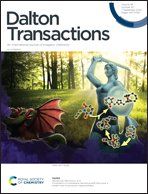Covalent pendulous anthraquinone polymers coupled on graphenes for efficient capacitance storage in both alkaline and acidic media†
Abstract
Novel crystalline covalent organic polymers (COPs) were constructed by reacting 1,4-diaminoanthraquinone with 1,3,5-triformylphloroglucinol or tris(4-formylphenyl)amine (TPDA or TADA). After they were covalently bonded to amine-functionalized graphene oxides, the resulting mesoporous COPs@graphene composites demonstrated efficient capacitance storage performance in both alkaline and acidic media. In particular, the as-synthesized TPDA@graphene displayed a reversible specific capacitance of 522 F g−1 in a 6.0 mol L−1 aqueous KOH electrolyte, superior to the previously reported COPs with inconspicuous capacitance storage properties in alkaline media. Its specific capacitance also reached 390 F g−1 in 2.0 mol L−1 H2SO4. The impressive capacitance storage properties of this composite can be ascribed to its unique structure with abundant pendulous anthraquinone redox groups and better electrical conductivity enhanced by the coupled graphenes.



 Please wait while we load your content...
Please wait while we load your content...